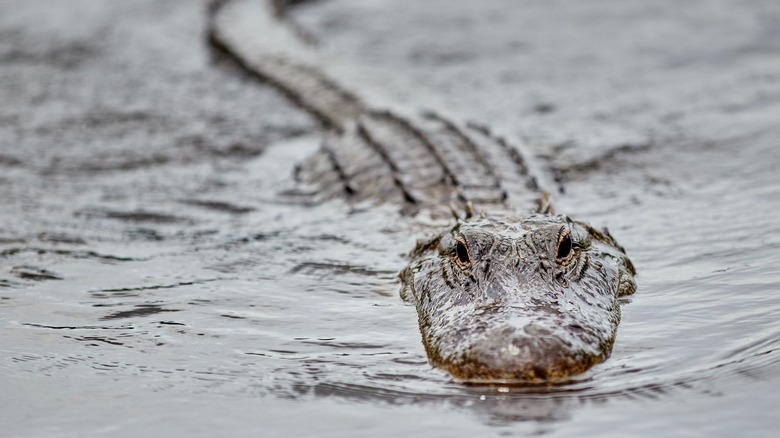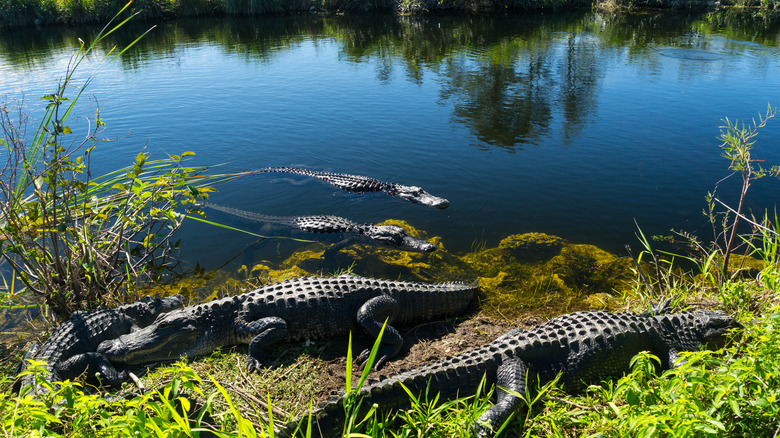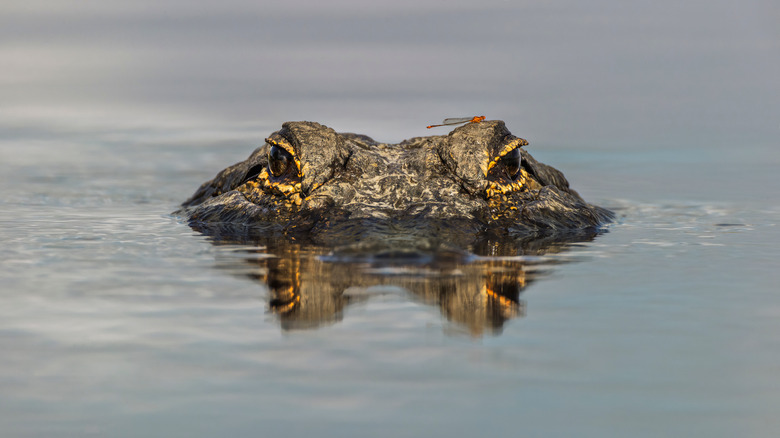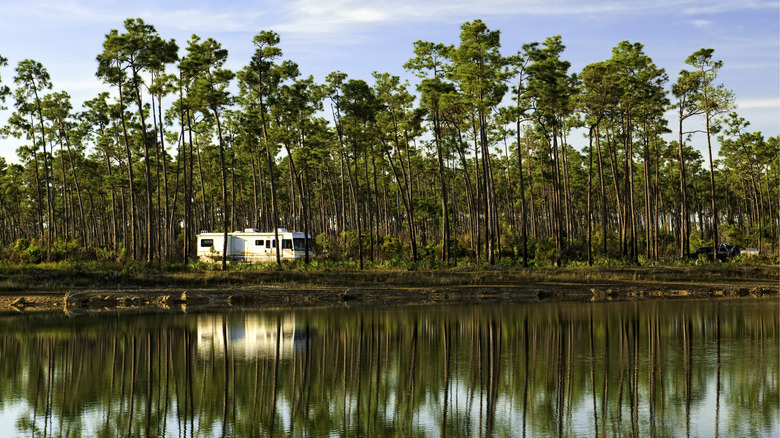The One Place In The World You Can See Both Wild Alligators And Crocodiles
The Florida Everglades are described by the National Park Service as "the largest subtropical wilderness in the United States," and its 1.5 million acres of wetlands are home to many fascinating animals. Some of these are endangered, and some can't be found anywhere else in the world. These include manatees, dolphins, flamingos, Florida panthers, and American crocodiles. South Florida is the only place in the world where you can see both an American crocodile and an American alligator.
These animals have survived since the age of dinosaurs and look much the same as they did 200 million years ago. For reptile lovers wishing to catch a glimpse of a creature that has walked the earth since prehistoric times, the destination is Everglades National Park. To see them in their natural habitat, you will want to visit Shark Valley or Eco Pond, both of which are home to many freshwater animals. Although they live in the Everglades year round, you will have the best chance of seeing them in the winter dry season, when low water levels push most of the animals into a few locations, making them easier to find.
Which crocodilian are you looking at?
The Everglades are home to multiple crocodilians: American crocodiles, American alligators, and caimans. Although these relatives are often confused for each other, they are all distinct animals. Here's how to tell them apart.
Crocodiles and caimans are grayish green, alligators are so dark they appear black. Alligators have broad, round snouts and when their mouths are closed you can see their upper teeth. Caimans have shorter and even rounder faces. Crocodiles have narrower, pointier snouts, and when their mouths are closed you can see one of their bottom teeth. Although they range in size, alligators can get to be 11 feet long and weigh up to 800 lbs, while crocodiles can be 20 feet long and weigh up to 2,000 lbs. Caimans are usually only about five feet long. While caimans may look more like crocodiles, they are actually more closely related to alligators.
Are they dangerous?
Both crocodiles and alligators can be dangerous to humans, but there are steps you can take to stay safe. Even though it is exciting to see a crocodile or an alligator, stay away from the water's edge and definitely do not wade in or swim in areas where you see them. If you are camping or hiking in areas where you know there are crocodiles and alligators, dispose of food waste properly, and never intentionally toss food to one, as getting them to associate people with food can cause extremely dangerous situations for both the animal and humans they come across.
If you hear a crocodile splash into the water, it is likely afraid of you. In general they are almost silent, so their hasty retreat shows that they are scared. Alligators will hiss if you get too close. Both of these are warnings that should be heeded.
How to observe crocodiles and alligators in their natural habitat
The Florida Everglades are the only place in the world where it is possible to see these two species together. It's vital to keep this place as wild as possible so that it can be experienced for generations to come. As stated by the National Parks Service, "Observing wild animals in their natural environment is a privilege" and it's important to follow the best practices when seeking out these fascinating reptiles.
Keep an eye out for crocodile slide marks by the water — these are the tracks that they leave as they push themselves back in. They are most active at night, though they will bask in the hot sun.
If you are lucky enough to see one, give it space. As tempting as it is to get up close, they are wild animals and powerful predators deserving of our respect. Try bringing a pair of binoculars to give yourself a closer look at them without actually having to get too close.



